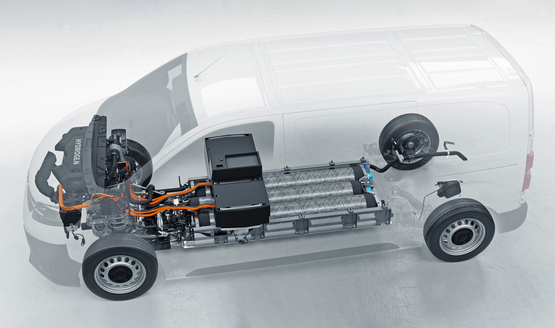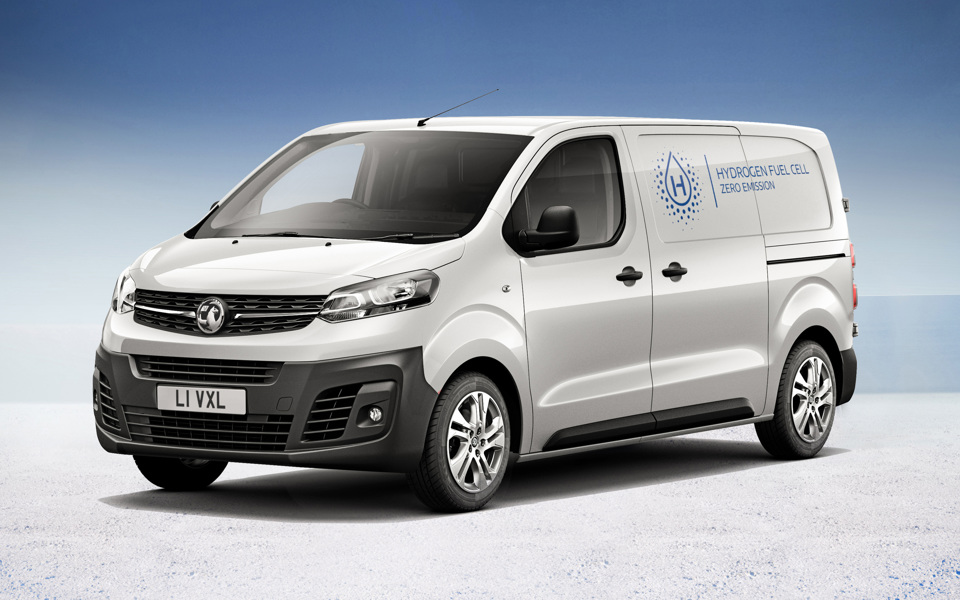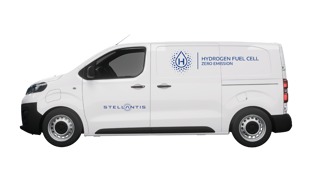Vauxhall has unveiled its new zero emissions Vivaro-e Hydrogen van, which has a range of up to 249 miles.
Based on the Vivaro-e with the fuel cell system located in the engine bay, the hydrogen van refuels in three minutes and has a cargo volume up to 6.1m3, the same as the diesel or battery electric versions.
Stellantis (the new parent name for the merged PSA and FCA groups) recently announced it would be launching three hydrogen plug-in hybrid, zero-emission vans based on the existing Citroën Dispatch, Peugeot Expert Partner and Vauxhall Vivaro vans.
Vauxhall says it is speaking to UK fleets about hydrogen fuel cell technology and expects right-hand drive vehicles to arrive in 2023.
Sister brand Opel plans to start delivering the first left-hand drive vehicles to fleet customers towards the end of this year.
Paul Willcox, managing director of Vauxhall, says hydrogen can offer fleets a long driving range and “ultra-fast” refuelling.
“We are already in contact with UK fleet operators that want to go the extra mile on sustainability and we look forward to bringing Vivaro-e hydrogen to the UK soon," he added.
The new fuel cell electric vehicle (FCEV) is based on the existing battery electric Vivaro-e with two sliding side-doors.
The plug-in fuel cell concept of the Vivaro-e hydrogen enables the integration of the whole fuel cell system with the existing traction motor under the bonnet of the production vehicle.
In addition, the battery of the Vivaro-e battery electric vehicle (BEV) is replaced by three 700- bar hydrogen tanks. The carbon-fibre cylinders can be filled in just three minutes, giving a range of 249 miles.

The Vivaro-e Hydrogen, with its 45kW fuel cell, is capable of generating enough power for continuous motorway driving, while the 10.5kWh lithium-ion battery, located under the front seats, provides dynamic peak power when required - for example, at start-up and under acceleration.
Since the battery covers power needs in such situations, the fuel cell can run at optimum operating conditions, says Vauxhall.
The battery also enables regenerative braking, while the plug-in capability offers the opportunity to recharge the battery externally if necessary, e.g. at a charging station, providing 31 miles of pure battery electric range.
Furthermore, the battery electric version becomes a fuel cell electric LCV without any modifications to the body (available in standard 4.95m and long 5.30m wheelbase) and with no impact on the 5.3m3 to 6.1 m3 of cargo space, while the payload increases to 1,100kg.
The Vivaro-e Hydrogen will be assembled at Vauxhall/Opel’s research and development centre in Rüsselsheim, Germany.
The Government committed £3 million of funding to kickstart the launch of a hydrogen transport hub in Tees Valley in March.
The site, which is expected to be fully operational by 2025, will be used to research and trial hydrogen-powered transport solutions.
Currently, there are 25 hydrogen refuelling stations in France and 90 in Germany, with more being added every month. The UK has 14 hydrogen refuelling stations, according to UK H2 Mobility.
The majority are in the south of England, with two in Wales, two in Scotland and one in the north of England.























Login to comment
Comments
No comments have been made yet.